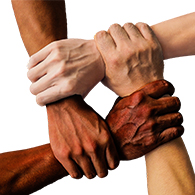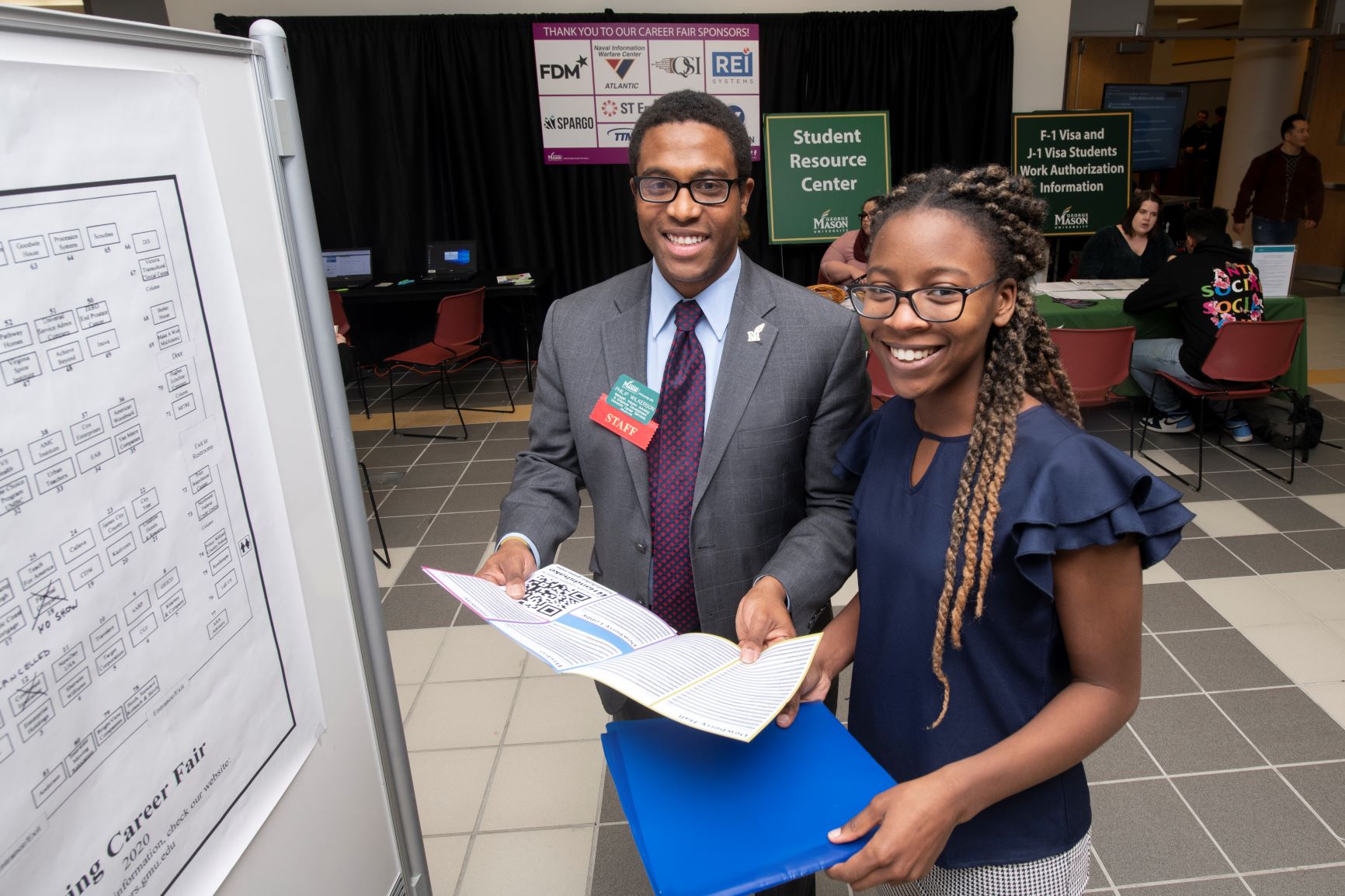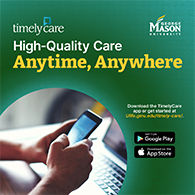By: Olivia Genar-Fernández, Ty Phong Dang, Katherine Garcia-Vidal, and Alex McGarey, Mason students in the School of Business
Disclaimer: The programs and services offered by George Mason University are open to all who seek them. George Mason does not discriminate on the basis of race, color, religion, ethnic national origin (including shared ancestry and/or ethnic characteristics), sex, disability, military status (including veteran status), sexual orientation, gender identity, gender expression, age, marital status, pregnancy status, genetic information, or any other characteristic protected by law. After a thorough review of its policies and practices, the university confirms that it meets all federal mandates as articulated in federal law, as well as recent executive orders and federal agency directives.
“A diverse mix of voices leads to better discussions, decisions, and outcomes for everyone.” – Sundar Pichai
A diverse and inclusive work environment is an important goal for many employees and companies. One powerful way to strengthen diversity and inclusion in the workplace is through verbal and nonverbal communication. Here is how communication can strengthen diversity and inclusion at work.
Fostering the appropriate use of verbal and nonverbal communication practices will actively create an inclusive environment. That involves embracing diversity, understanding the cultural differences among people in your organization, and respecting the different opinions that your colleagues may have when you are communicating with one another, according to this University of New England article.
Verbal Communication
Verbal communication is the use of words to speak about how you feel about a conversation or a specific situation. This Business Terms.org article points out that verbal communication uses your soft skills, helps you exude confidence, and lets the listener know how you feel about the topic at hand. You can communicate verbally through your tone, word choice, clarity, and the rate at which you speak. It can allow companies to create a safe environment for their employees.
Creating a safe and open environment can also help promote diversity and inclusivity in the workplace. In order to do so, companies need to find a way to promote employee-led conversations, according to this Forbes.com article. When they allow employees to connect and communicate on topics such as personal issues or worldwide issues it can encourage employees to talk about their feelings or concerns in an environment that is free of judgment and they can trust that they will receive support from their colleagues. When people feel comfortable in their environment they tend to work better with those around them, when businesses create a safe environment for their employees they can also help increase productivity.
Nonverbal Communication
Nonverbal communication is communication that is expressed in ways without using words. For example, when you make facial expressions someone can grasp an idea of how you feel about them or something that they say. You can express your emotions – such as discomfort, sadness, joy, anger, and fear – with your facial expressions, this HelpGuide.org article points out. The way you sit, your posture, or the way you stand is another form of nonverbal communication expressed through body movement. This can also be expressed through the small noticeable movements you make. Are you fidgeting? Are your arms crossed or are you using your hands to speak? Such things indicate to your peers if you’re nervous or closed off. Your eye contact can express how interested you are or how much you are paying attention to someone. Eye contact can tell someone if you are shy or anxious if you are looking all over the place rapidly or looking at the floor.
Pronouns
More recently, companies and universities have begun using pronouns in order to increase inclusivity throughout their communities. When people announce their pronouns, it allows everyone to be correctly identified when communicating with others. Although this is not necessarily required in businesses and universities, many have said that when they see others doing it they feel the social pressure to do it themselves, according to this Wall Street Journal.com article. Companies hope that their employees will become interested when seeing others sharing pronouns and educate themselves on why this may be helpful in making sure everyone feels comfortable and included. This is a form of nonverbal communication that helps promote inclusion in the workplace. The more employees who begin sharing their pronouns shows that they are doing more in order to support diverse employees. In order to incorporate pronouns into their companies, businesses will have employees get name tags that include their pronouns or encourage them to include their pronouns in their email signatures. People also publish their pronouns on Zoom/virtual meeting sites, and social media sites like Instagram or TikTok, it is even an option in the settings on LinkedIn. It has also become more common for people to add their pronouns to their resumes if that is something that makes them feel more comfortable.
Aggressions and Microaggressions
When working in large corporations, many people of color are discriminated against not only systematically but through how the company communicates with them. This New York Times article describes how Google is being sued by a former employee. The former employee, Ms. Curley, said during the six years she was at Google she and her other Black female colleagues were not allowed to speak or present during any important meetings. She also said that managers often mistook her for two other Black female employees. This is a clear example that Google is not communicating or letting their Black employees communicate in order to do their jobs or better their work environment. When employees are not allowed to speak or share during meetings they will begin to feel unappreciated and feel as if they won’t be recognized for the work they do for the company. In order to allow their employees to feel seen and succeed in their job, Google needs to improve the way they communicate with Black employees and make sure they feel appreciated and included.
Katherine, a Latina woman on our Mason student team of authors for this article, experienced an incident in her workplace in which she was told that “foreign people do the cleaning better.” She noted that the experience had been troubling, but was also a lesson to establish boundaries in the workplace and to speak up against prejudice – even when it comes in forms of microaggression. That incident reminded Katherine to prioritize the feelings of others when speaking, and to be aware of how a message may be received and perceived by those listening.
Poor verbal and nonverbal communication can create a negative environment at work. The term “microaggression” is a concept that describes small yet offensive behaviors or remarks against a marginalized group. Derald W. Sue, a psychology professor at Columbia University, has written two books on the term and defines it as, “The everyday slights, indignities, put-downs, and insults that people of color, women, LGBT populations or those who are marginalized experience in their day-to-day interactions with people.” Microaggression is not a targeted insult with the intent to harm someone. Instead, it is an action that happens frequently and casually, and most of the time the person isn’t intending to cause any harm. Bias and lack of knowledge from the perpetrator can cause harmful psychological effects to the victims, this Vox.com article notes.
Additional Communication Tips
Here are some additional tips for being more inclusive in your communication. First, aim to treat everyone without bias. You should never assume that someone will need special attention. Second, be aware of any cultural barriers that may affect how someone interprets what you are communicating. Lastly, educate yourself about your diverse colleagues, doing research on what you can do to communicate inclusively with them prior to meeting with them. The most important communication strategy is to be yourself, speak up when you don’t understand something, and ask speakers to repeat themselves or clarify what they’re saying so you can better understand them, according to the University of New England article.
Communicating with a mutual goal of thriving together in the workplace can help you and your colleagues strengthen your work environment for everyone.
Additional Resources
This Center for Creative Leadership article explains 5 ways to take real action on diversity, equity, and inclusion in the workplace.
Read motivational quotes on diversity and inclusion in this Mason article.
Learn more about promoting a diverse workplace environment from Mason’s Office for Diversity, Equity, and Inclusion.
Write one of these Thriving Together Series features! We’re looking for contributions on all topics related to well-being. Read other Thriving Together Series articles here and contact us at [email protected] for guidelines. Thank you for helping our Mason community thrive together online!






















